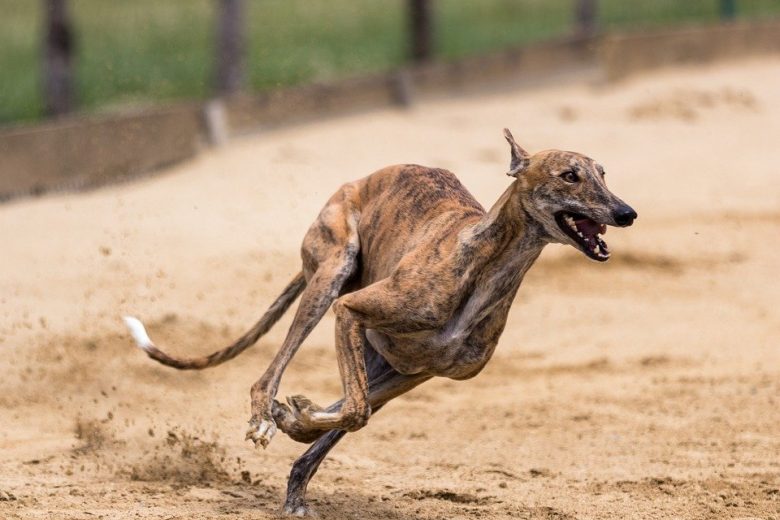WICHITA, Kan. (KWCH) – Long days of searching and standing guard to bring home a family’s missing greyhounds follows Friday’s deadly crash in Marion County. On the western edge of the Marion Reservoir, Shawn Gilligan and his dog keep the search going.
Table of Contents
Greyhounds as Watch Dogs?
Would a greyhound make a good watch dog?No. There are exceptions, but as a rule greyhounds don’t bark.
Are Greyhounds Aggressive?
Occasionally, a Greyhound may bark; however, they are generally not barkers, which is beneficial in suburban environments, and they are usually as friendly to strangers as they are with their own families. [14] University of Pennsylvania 2008 study found that Greyhounds are one of the least aggressive dog breeds towards strangers, owners, and other dogs.
Greyhounds Background
While a greyhound’s personality can vary based on their lineage, they are generally even-tempered, mellow dogs who enjoy relaxation as much as humans. Given their sight-hunting background, greyhounds have a high prey drive and can pursue small animals that might catch their eye on a walk—but they are trainable with a little patience and make excellent dogs for mature families or empty nesters.
Family and Bonding
Are greyhounds playful?Playfulness varies from dog to dog. Some are very playful and love stuffed toys and/or playing with other dogs while others would rather be “couch potatoes”.
Friendly
Greyhounds make great pets. In addition to their grace and speed, people love greyhounds for their sweet and mild nature. They have a friendly nature toward people and other dogs. Greyhounds are loyal and affectionate to their family. The greyhound is not aggressive towards strangers, but he will let you know that someone is approaching your home.
Greyhound Nature
If Greyhounds become bored, they can become destructive. They also still possess a very strong instinct to hunt, and will definitely chase any small animals that can be considered as prey. Because of this, these determined dogs will need to be kept in a home that has a good fence. They should be kept on leash at all times during walks for the same reason. Because these dogs are so tall, getting raised bowls for food can be a good idea. You must also be cautious so that your Greyhound does not get overweight, as they are prone to it. They should get fed twice a day. Although their coat is short, they are still known to shed a lot and will need to be brushed every day. Hound mitts or rubber curry brushes are their favorite tools for grooming. These dogs can also have poor dental health, and will need regular teeth brushing. Unless they wear down on their own, the nails should be trimmed one or two times every month.
Intelligence
Intelligent and independent, the greyhound can be considered “cat like” in many ways. Greyhounds do have a sensitive side and will react to any tension in the home. With mistreatment, the greyhound can become shy or timid in nature.
Love
Greyhounds as a Pack Animal
Greyhounds are often described as medium to large dogs that, on average, stand between 25-30 inches. Their typical weight ranges between 50-80 pounds, females weighing less than males. Compared to their height, a Greyhound’s weight is actually relatively low. There are a handful of other dog breeds with a similar height to Greyhounds, but they pack on another 20-30 pounds more.
Physical Traits
The lean athletic breeds collectively known as ‘sighthounds’ include Greyhounds, Afghans, Salukis, Borzois, Whippets, Wolfhounds and Deerhounds. Their significance to the anaesthetist is the prolonged recovery from anaesthesia induced by thiopental because of the lack of body fat (and muscle in some breeds), which precludes redistribution and lowering of blood thiopental concentration. Reduced ability to metabolize thiopental and propofol has been documented in greyhounds. For these dogs, propofol yields a vastly improved quality of recovery from anaesthesia. Ketamine is a less satisfactory agent for anaesthesia in these breeds than propofol, unless adequate sedation is provided for recovery, because these dogs may exhibit signs suggestive of dysphoria. Greyhounds are trained in their racing career not to sit down, and this behaviour must be adjusted for when inserting an IV catheter by accomplishing this in the standing animal or by positioning the animal in lateral recumbency. Many greyhounds will try to stand early after anaesthesia despite significant ataxia.

